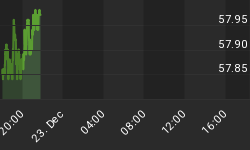
Should you stop trading and managing your investment positions because the financial system is broken and failing? Of course, you should not.
One must realize that "the system" was always broken and traded accordingly right throughout the whole of history. It is doing no differently now, and as a whole, the system itself deserves exploitation.
Granted, we are proponents of reform across the spectrum, however, until it manifests, we are still operating under the existing structure in spite of all its shortcomings.

Back on May 4, we made public our short-term trading strategies performance relative to the collapse in the price of Crude Oil.
Today, we will bring you up to speed on our efforts to navigate "the system" profitably over the short-term.
The chart above, courtesy of the Chart-Cast Pilot, illustrates crude futures rallying from a prospective pivotal print low at $77.28 registering on June 28. Following multiple failed attempts to stabilize and set a bottom over the past several weeks, Crude Oil finally appears to have accomplished for now, a short-term tradable base.
Take note of our strategies daily equity performance illustrated in the first of three panels displayed at the bottom of the chart.
Our short-term trading strategy had been short from $82.97 on June 20. We took $2710 in profits for each short contract traded and reversed long a week later. This long position and the subsequent whipsawing short position taken near the 77.28 pivot low were both losers, giving back all of our recent gains plus another $1560 for good measure. Ouch!
Fear not however, as taking quick losses when wrong, as painful as they might be, is a necessary cost one must accept for undertaking such risk. All that matters is that one's winnings far outpace one's losses by a margin acceptable to undertaking such risks.
Below, today's $11,600 daily account balance of open profits for all short-term trading operations shows that we have been long crude oil from 6/29 at a price of $80.95, and hold open profit in this position in excess of $6,500 per contract.

Fusing Discretionary Chart Analysis with Non-Discretionary Trading Strategies
Back on June 11, outside the purview of the underlying trading strategy, upon Crude Oil trading beneath the 82 handle, we alerted members of a 5-pt sell trigger, which defined a boundary that would defend a downside price target of at least $77.28. On June 28, the pivot low occurred at exactly $77.28 per barrel.
Was this downside 5-pt trigger (equal to $5,000 dollars per contract) capturing its exact target simply a coincidence? Yes, the pivot low bottomed in coincidence precisely at our exact target. However, it is not coincident that we often realize such targets though rarely do we capture them precisely on the nose as we have here.

Take further note that Crude Oil has closed today's session at a key area of horizontal support/resistance suggesting that the strong rally may stall over the short-term.
Although observers may use this type of ancillary chart analysis as actionable information relative to the underlying trading strategy, it is also useful for those who may wish to exercise discretion in overriding or trading around the strategy.
The ancillary fusion of consistently accurate chart analysis in concert with the constant monitoring of effectual non-discretionary underlying trading strategies is what gives the Chart-Cast Pilot an extraordinary competitive advantage.
SOLUTIONS MENU
MEMBERSHIP OPTIONS
















